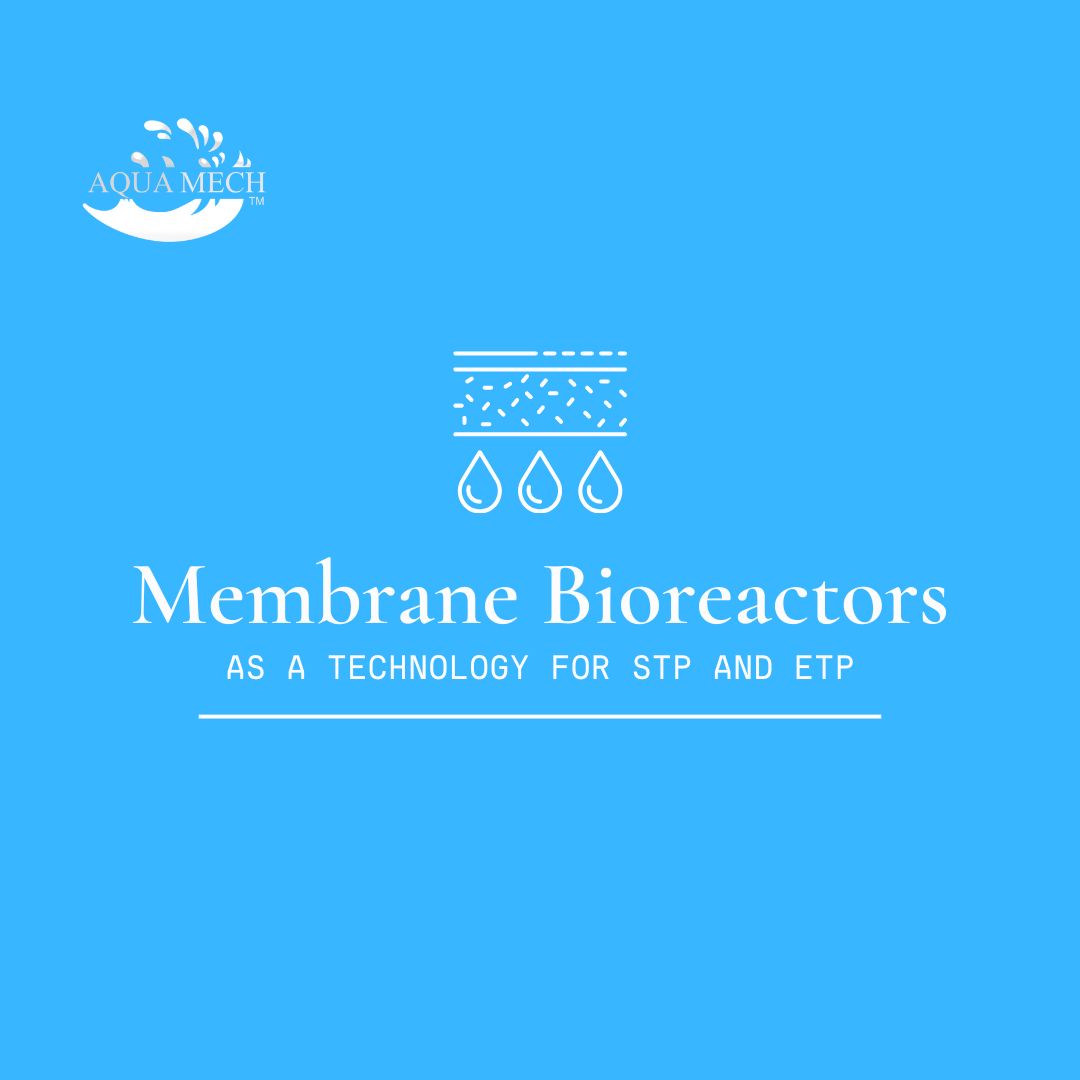Physical Address
304 North Cardinal St.
Dorchester Center, MA 02124
Physical Address
304 North Cardinal St.
Dorchester Center, MA 02124

The term “membrane bioreactor” (MBR) refers to wastewater treatment systems that combine a perm-selective membrane, such as microfiltration or ultrafiltration, with a biological process, such as a suspended growth bioreactor.

This technology is a modified version of the conventional or traditional activated sludge (CAS) process. The CAS process includes a biological tank where aerobic treatment is used to biodegrade organic carbon and amino compounds, followed by a sedimentation tank.
The sedimentation tank, also known as a ‘secondary clarifier,’ separates the solids from the liquid, allowing the clarified liquid to be discharged or sent on to tertiary treatment (such as filtration and/or UV disinfection).

The following factors play a significant role in the design of a membrane bioreactor system:
1. The Membrane Configuration Process:
MBRs come mainly in two membrane configurations:
The solids produced by the biological process are not allowed to pass through the membranes with water. Also, there are two directions in which water flows through it, “in-to-out” or “out-to-in”.
2. The Membrane Separation Process:
Configuration of the membrane separation processes involves placing the membrane module in or outside the tank in the entire MBR process.
Membrane separation is a technique that uses pores and/or minute openings in a continuous structure’s molecular arrangement to selectively separate materials.
Membrane separations are divided into two categories, pore size, and separation driving power.
These two categories are further classified into:
3. The Biotreatment Process Configuration:
Biochemistry is defined by the biotreatment process configuration, and thus determines:
What contaminants (organic carbonaceous materials, ammoniacal compounds, and nutrients) are removed, and what products are formed (carbon dioxide or methane, nitrate or nitrogen, etc)
Membrane technology is used in biological processes as a filter to preserve biomass, such as in an MBR, or as a diffuser to introduce air or oxygen in molecular or bubbleless form, such as in a membrane aerated biofilm reactor or MABR.
Biotreatment processes can be set up as either a “fixed film” or a “suspended growth” process. An MBR is a suspended growth process that is based on the traditional activated sludge (CAS) process but uses membrane separation instead of sedimentation of the preserved biological solid.
The process steps for a traditional conventional activated sludge (CAS) system (top) and membrane bioreactor (bottom) are schematically depicted in the block diagram below.
CAS is a common biological method for removing organic matter from wastewater. It entails the oxidation of carbonaceous biological matter to reduce organic pollution.
It is a traditional setup of wastewater treatment plants and naturally uses flotation and sedimentation basins, a clarifier for posttreatment, and sometimes disinfection tanks.
The reactor tank contains a membrane that acts as a physical barrier, while the MBR combines these steps essentially in one basin. Much higher TS values are possible due to the compact design, resulting in a much smaller aerobic tank.


The system is compact and has a high rate of degradation, partly due to the optimization of the time the body is kept. Higher sludge concentrations between 10 and 20 g/l can also be treated.
The suspended matter, (pathogenic) bacteria and COD produce a very good quality of effluent. Often so excellent is the effluent quality.



The India membrane bioreactor market stood at around $79 million in 2019 and is expected to exceed $100 million by 2025, with a CAGR of 11% percent between 2020 and 2025.
The demand for Membrane Bioreactor will be driven by ongoing industrialization, growing population, and increased foreign investments in the industrial and municipal wastewater treatment sectors (MBR).
The demand for wastewater treatment will increase as the amount of wastewater generated in residences, offices, hotels, and commercial areas increases.
Soon, increasing industrial wastewater from soft drink and beer firms, sugar production, metal processing, and photofinishing would add to MBR demand.
Membrane Bioreactor systems are commonly found in industrial wastewater treatment facilities and Sewage Treatment Plants (STP) in case of institutions and housing societies.
MBRs can also be used to treat the sludge from landfills. It is a high-tech system that necessitates professional design.
The demand for MBR technology is driven by rising environmental issues about industrial wastewater disposal and declining freshwater resources in developed economies. The business outlook will be bolstered by population growth, urbanization, and industrialization.
Depending on their composition, these changes may place a strain on natural resources and pose unsustainable environmental challenges.
As a result, membrane bioreactor (MBR) technology is identified as a significant component of advanced wastewater treatment and reuse schemes, and it is geared toward achieving long-term water management in both industrial and institutional segments.
Aquamech does provide MBR solutions in Flat Sheets and Hollow Fiber Membrane options from a capacity range starting from 10 KLD up to 2000 KLD.
These capacities are available with standard designs. You may contact us if you need solutions related to industrial wastewater treatment or STP for institutions.